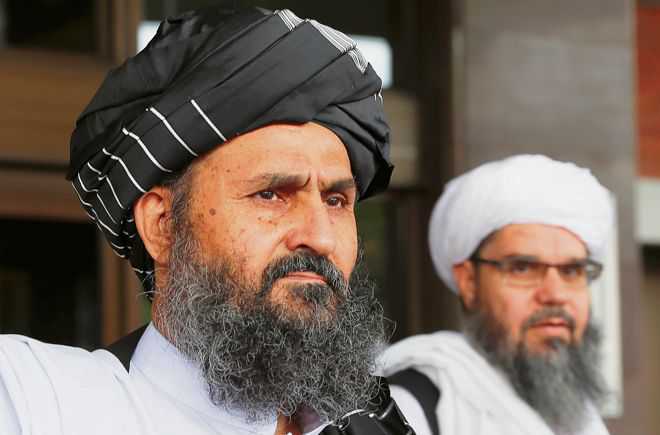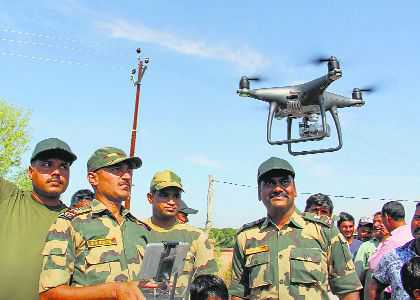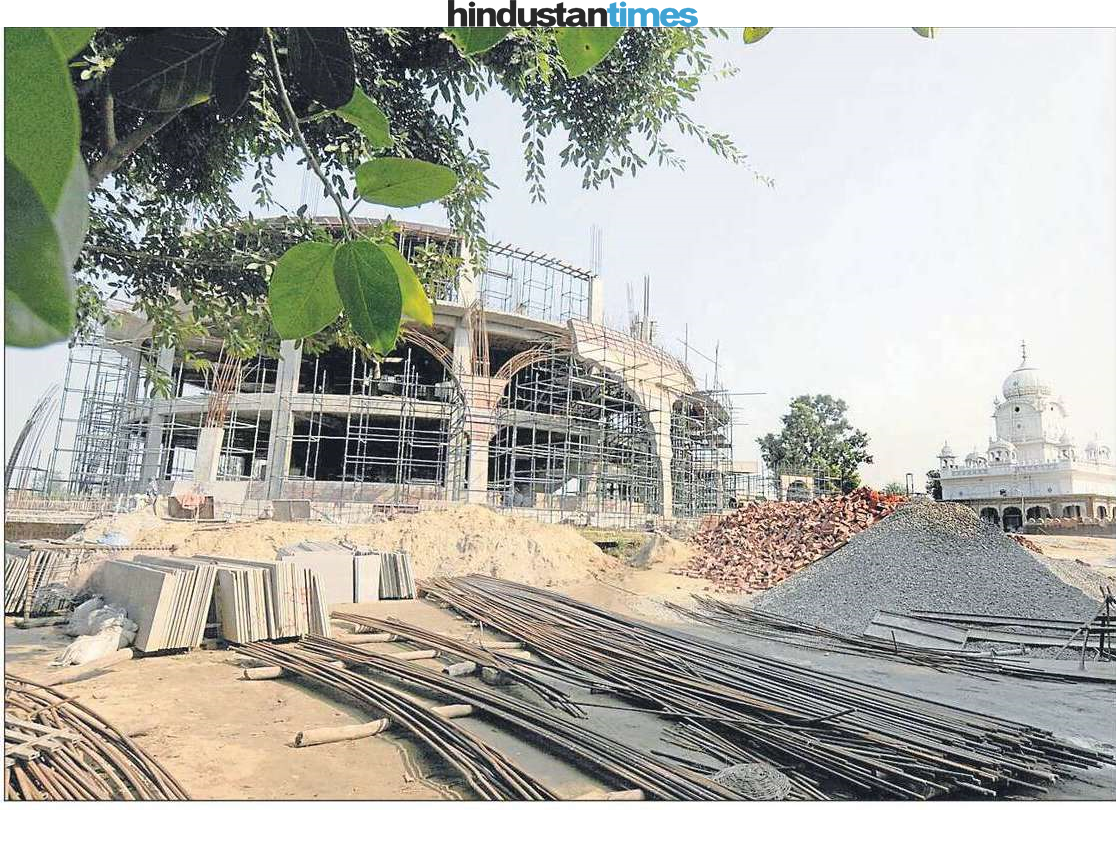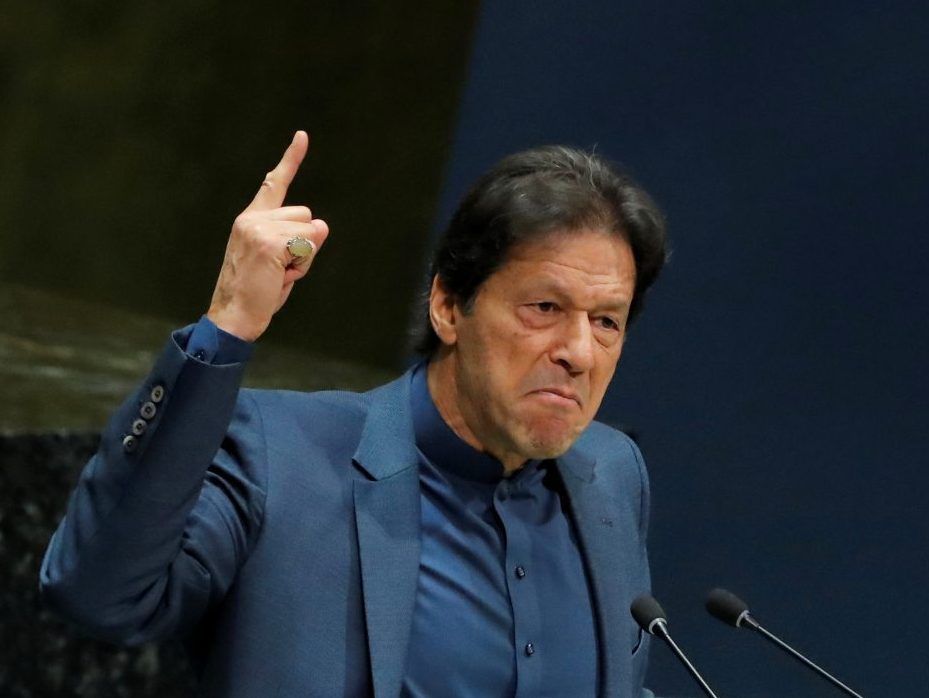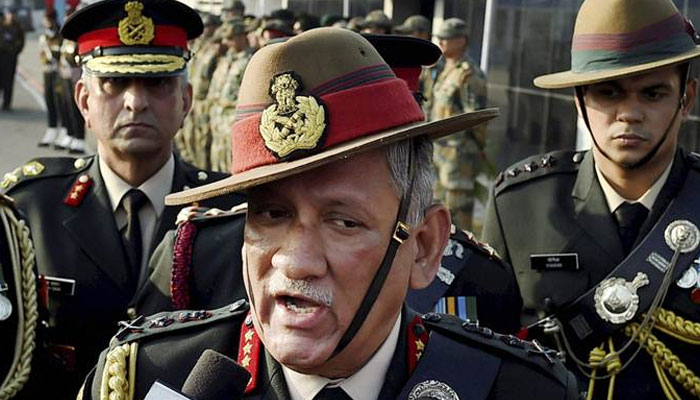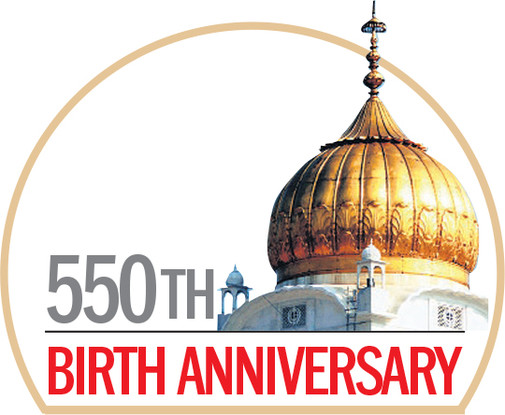
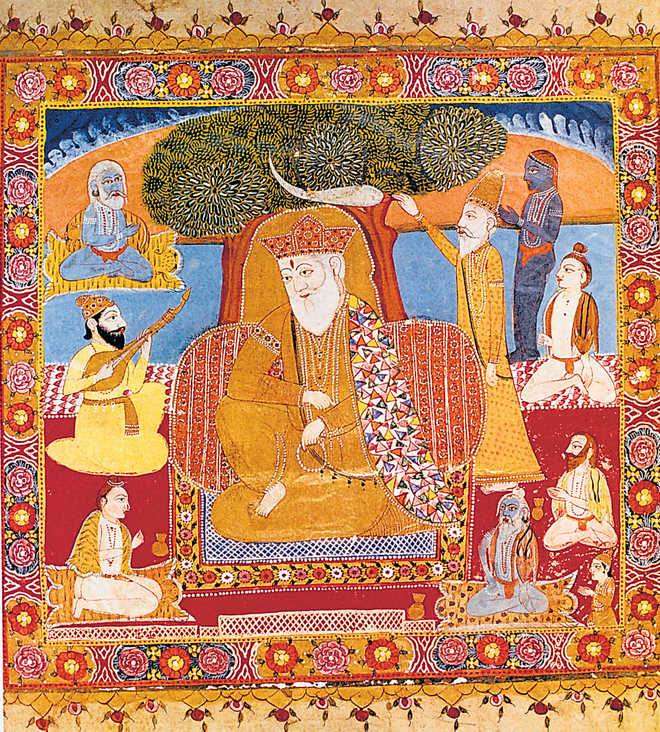
Roopinder Singh
“All are creatures of God and His creation.” This kernal from Guru Nanak Dev’s composition comes to mind again and again as we see a world divided by man-made divisions, even as we, the people of the world, fail to recognise and identify with the essential unity that is the very core of our being. By failing to acknowledge the oneness of creating, we seek to carve out distinctions that exist only in the corners of our minds dominated by avarice and ignorance.
The sub-continent, as it existed five-and-a-half centuries ago, was ridden with strife. It was divided into two distinct and mutually antagonistic religious persuasions — pan-Hinduism and Islam. These were by no means homogenous: within each group were separate strands and various shades of persuasion.
When the fight was between “my way to my God” is better than “your way to your God,” the Guru declared that there was only one God, though there were many ways to reach Him.
Yet, the world continues to build walls to keep out fellow beings. Tribalism toxically combines itself with nationalism to deny succour to those who need it the most. We forget our humanity during the times that we really need it. People continue to be discriminated against, persecuted, and even killed in the name of religion.
It is time to reiterate what the Guru said: “There is no Hindu, no Mussalman,” all are creatures of God.
Spreading the Word
Guru Nanak travelled far and wide, met people and had discourses and discussions with the learned and the lay. The wide interaction that he had with them allowed him to spread the Word, to get across his point of view. The Janamsakhis refer to an incident in Multan. The local religious leaders came to him with a bowl full of milk, signifying that their cup of spiritual masters was full. The Guru placed a flower on it, which floated, spreading fragrance without displacing the milk.
Much of what we know about the Guru comes from the Janamsakhis, written long after he had left the world, but very much the oral tradition till then, and even after. It is these life-stories that illustrate the life of the Guru. We marvel at how much he travelled in over two decades — to Tibet in the north, to Sri Lanka in the south, Saudi Arabia in the west and Bangladesh in the east.
| The local religious leaders came to him with a bowl full of milk, signifying that their cup of spiritual masters was full. The Guru placed a flower on it, which floated, spreading fragrance without displacing the milk. |
| Families became the building blocks of the new agricultural commune in which people prayed together and attended to their worldly duties during the day. Kartarpur became the concrete expression of the application of the Guru’s teachings. |
| Guru Nanak was unsparing in his criticism of those who lost their bearings due to a feeling of power. Disgusted with the society around him, he described it as one in which the rulers were like lions, with their officials behaving like dogs. |
On equality
Even as we look at the chasm between the haves and have-nots that has given rise to the 2011 Occupy movements highlighting the wealth gap and advocating social and economic justice, it might be easy to believe that this is something new. Not really. Such a situation existed for centuries, only the two categories were the rulers and the ruled. At that time the Guru spoke of equality and showed how people could live together.
In Eminabad, Gujranwala, now in Pakistan, he chose to identify with the poor, as is illustrated in the instance where he decided to partake of the hospitality of a carpenter called Laloo, rather than the local grandee, Malik Bhago. The latter was riled, until the Guru showed the importance of honest labour as contrasted with exploitative accumulation. Gurdwara Khuhi Bhai Lalo marks the place.
The concept of vand chakna, of sharing what you have, is central to the Sikh ethos. The stress on sharing rather than hoarding has withstood continuing attacks from avarice and greed.
On women
The Guru was at odds with what was a prevalent notion of the position of women in society at the time — he maintained that women are worthy of praise and equal to men. His compositions highlight the role of women in families. He strongly disapproves of the practice of sutak, or impurity, attributed to women due to their physiological differences, as a result of which they were banned from participating in family and religious functions during such times. The Guru encouraged the active participation of women as equals in the worship of God. And in society, he created space for them within the prevalent patriarchal system.
Sangat and pangat
Families became the building blocks of the new agricultural commune in which people prayed together and attended to their worldly duties during the day. Kartarpur became the concrete expression of the application of the Guru’s teachings.
Guru Nanak came out strongly against all artificially created divisions and all discrimination, both in word and deed. “The caste of a person is what he does,” he maintained and set out to dissolve differences through the institutions of sangat and pangat.
You don’t have to imagine a world where everyone is welcome; it exists in the sangat. Equality and egalitarianism are visible as everyone sits down together in a pangat for the langar. Guru Nanak’s mother, Mata Tripta, and his wife, Mata Sulakhni, were active in the seva of langar. The role of Mata Khivi, the wife of Guru Nanak’s successor, Guru Angad Dev, who lived with him at Kartarpur, has been recorded by the bards, Rai Baiwant and Satta.
Resisting autocrats
How easy it is for those conferred with responsibility to devolve into autocrats. Guru Nanak was unsparing in his criticism of those who lost their bearings due to a feeling of power. Disgusted with the society around him, he described it as one in which the rulers were like lions, with their officials behaving like dogs. Human behaviour seldom changes markedly.
What Guru Nanak said then about the rulers and the ruled, unfortunately, applies too often in today’s world as well: “Greed and sin have become the king and the minister. Falsehood is the local governor. Lust is the deputy with whom consultations are held.”
How does one protect oneself from adopting such an attitude? The antidote to hubris is seva, serving strangers. This is a significant concept in the Sikh way of life. Seva gives life some meaning and adds to the core moral strength of a person. We see people performing seva at gurdwaras, and at various social occasions. Inculcating that attitude in one’s life, however, is another matter.
Guru’s compositions
In Guru Granth Sahib, we find Guru Nanak’s bani — 974 shabads composed in 19 ragas. The most popular one is, of course, Japji. The first stanzas comprise what is popularly called the Mulmantra.
“There is one God,
Eternal Truth is His Name,
He is the Sole Creator.
He knoweth no fear;
Is at enmity with no one.
His being is timeless and formless.
He is not incarnate.
He is self-existent. Attainable
He is through the grace,
Of the Guru, the Enlightener.”
The Mulmantra forms the creedal or formal statement of Sikh religious thought, its essence. Other popular banis include Asa di Var, Bara Mah, Sidh Gosht and Aarti. Here are the opening stanzas of the Aarti, written at Jagannath Puri:
“The sky is the salver
And the sun and the moon the lamps
The luminous stars on the heavens are the pearls.
Scented air from the sandal-clad hills is the incense
The winds make a whisk for you,
And the vast forests wreaths of flowers.
The unstuck music is the trumpet.
Thus goes on the Aarti for you,
O you dispeller of doubt and fear.”
The Guru’s compositions contain truths that pertain not only to the religious aspect of our lives, but also social and family matters, things that have been ordinarily considered outside the purview of religion.
The 550 years since the birth of Guru Nanak have been eventful. Even as we look at how much the world has changed materially, the spiritual evolution of mankind still lacks the moral and ethical underpinnings of a true utopia. Thus, the need for a religious, ethical and moral compass that the Guru’s bani provides us.
Religion for the Guru embraced the worldly aspects of human existence. More than ever, at times like this we need his teachings. The founder of Sikhism set out to give a message of universal unity. He waged a battle against ignorance by appealing to the fundamentally good nature of human beings. Guru Nanak travelled far and wide in search of interaction with like-minded people, and to spread the Word. No wonder that his followers span the world, and are getting ready to gather at Kartarpur to celebrate 550 years of his birth.









